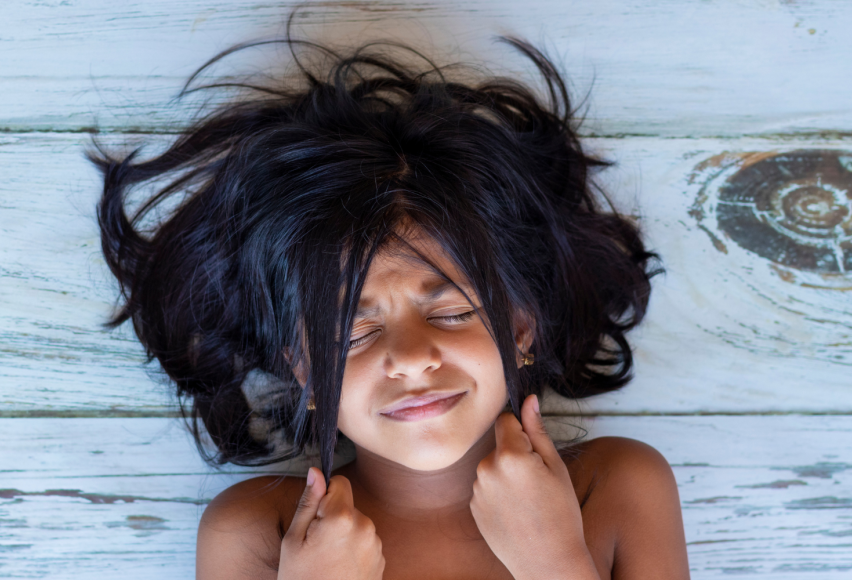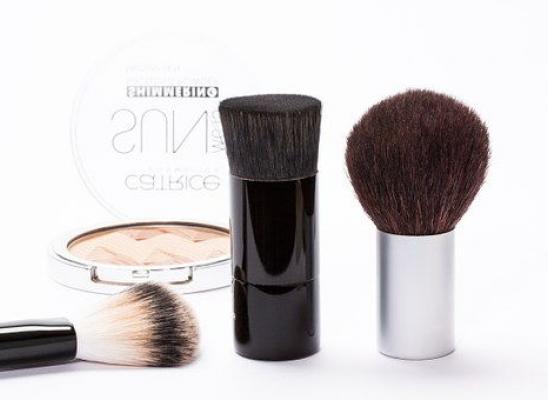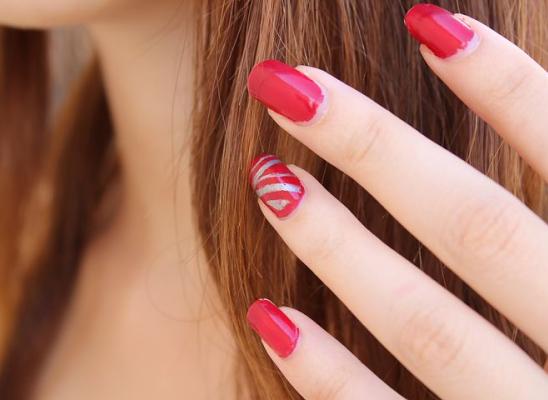Myth Busting: Trich Is Not Just A Phase

Online test
Find out the severity of your symptoms with this free online test
It’s just a phase. You’ll grow out of it.
For people living with trich, it’s a frustratingly common response from friends, family, and even sometimes, their healthcare providers. If only it were true.
When it comes to hair pulling, misconceptions and challenges abound:
- Is it just a bad habit?
- Will it just go away over time?
- Can someone just stop?
- Is it just a phase that kids go through?
- Is it done for attention? Is it on purpose?
The short answer to all is no. The fact is, trich is much more complicated than that.
Myth Busting
To understand the nature of hair pulling, it’s important to understand just what trich, clinically known as trichotillomania, is and is not.
It’s not dermatological. Trichotillomania is not a dermatological disorder. That might surprise some people because when we think of hair and scalp conditions, we usually see a dermatologist. And, it’s not uncommon for people with trich to make their first stop a dermatologist. This is especially true for children with trich. Dermatologists can help treat any skin damage that may be present, but the underlying dynamics of the disorder lie outside their area of expertise.
Trichotillomania is, in fact, a diagnosable psychiatric disorder. Hair pulling is primarily how it manifests. It is also characterized by significant emotional distress and impaired psychosocial functioning.
Trichotillomania is not just a bad habit. It is one of a group of disorders known as body focused repetitive behaviors (BFRBs) that are included in the same diagnostic category as Obsessive Compulsive Disorder (OCD). While not the same as OCD, they do share similar qualities. This association is important when we look at habits vs. compulsions.
- Habits can be viewed as reflexive behaviors. They are things we do, often without thinking, like brushing your teeth or putting on your seatbelt when you get in the car. These behaviors become almost automatic through a process known as habituation. In simplest terms, we do them consciously until they just become part of the routine. Habits can also be changed through increasing awareness.
- Compulsions are similar to habits in that they can become automatic. However, compulsions are driven by intense psychological urges to complete a certain behavior in an effort to relieve feelings of anxiety or distress. They are not easily changed by simply gaining awareness or deciding to stop. (One of the reasons why going cold turkey doesn’t work for most.) Dealing with compulsions usually requires psychological treatment intervention. Hair pulling and other BFRBs like skin picking behaviors are driven by these urges.
Trich is not the same for everyone. One of the aspects of trichotillomania that confuses a lot of people is that it looks differently across the lifespan. Onset for trichotillomania is usually in late childhood or early adolescence. It’s the trich that is probably most recognizable. It might surprise you to know that hair pulling is seen in infants and younger children too. It’s a form of trich commonly referred to as “baby trich”.
Baby trich, or pediatric trichotillomania, is characterized by repetitive hair pulling, resulting in hair loss and impaired psychosocial functioning for both the child and the family. While the exact cause of pediatric trichotillomania isn’t known, childhood psychosocial stressors such as parental bonding, changing family dynamics, or a change in routine may be contributing factors.
Unlike later onset, baby trich often resolves on its own but it remains a concern. Adolescent and young adult sufferers usually have a more long-lasting form of the disorder and may not respond as well to treatment.
How someone pulls their hair varies with age too. Infants and babies tend to twirl or pull their hair in an effort to self-soothe, not unlike thumb-sucking. Young children may pull their hair as a way to manage big feelings. It can also be attention-seeking. Over time, symptoms can wax and wane. Pulling styles trend towards more focused and less automatic hair pulling from childhood into adolescence with a trend back towards more focused pulling later in life.
Trich is heterogenous. Another important myth to dispel is that hair pulling is a singular experience. On the contrary, the experience of hair pulling is highly heterogenous. This means that trich is not the same for every person. For example, some people exclusively pull their scalp hair. Others pull their eyelashes or brows. Still others may pull hair on other parts of their bodies. And not everyone is distressed by their pulling. In fact, one study found that a number of people who live with a BFRB are rather unbothered by it all.
One thing is clear from research. Trich is more than simply a bad habit or a ploy for attention. While it can occur at any age, and can manifest differently from person to person, left untreated, trich can persist into adulthood and result in more severe symptoms.
Treatment Can Help
Probably one of the most persistent myths about trich is that there’s nothing you can do. On the contrary, while trich isn’t “curable”, there are effective treatment options to manage the disorder and some people find that they are able to achieve remission of their symptoms.
The first question people often ask is whether there are medications available. There are currently no medications that are used to treat trich. However, medication is sometimes used to treat co-occurring mental health issues such as anxiety or depression that may help in symptom management.
When it comes to treating trich, the best treatment outcomes have been found with psychotherapy, in particular, specific types of cognitive behavioral therapies. Historically, the gold standard for treating TTM has been Habit Reversal Training (HRT). Because BFRBs like hair pulling have both behavioral and cognitive components, there are emerging approaches that combine HRT with elements of other more cognitively-based treatments such as Cognitive Behavioral Therapy (CBT), Acceptance and Commitment Therapy (ACT) or Dialectical Behavioral Therapy (DBT). Using a combined approach can address both the behavioral and the emotional/cognitive aspects of hair pulling.
Finally, whether you’re living with trich, love someone who is, or are simply curious about the disorder, take time to educate yourself about the disorder. When you are informed, you can make better decisions about treatment, or even how to support someone you care about.
References
1. Thakkar, S., & Desai, N. (2023). Trichotillomania in children − how can a dermatologist deal with it? Indian Journal of Paediatric Dermatology, 24(2), 109-115. https://journals.lww.com/ijpd/Fulltext/2023/24020/Trichotillomania_in_Children___How_can_a.1.aspx?context=LatestArticles
2. American Psychological Association. (n.d.). Habit. APA Dictionary of Psychology. https://dictionary.apa.org/habit
3. American Psychological Association. (n.d.). Compulsion. APA Dictionary of Psychology. https://dictionary.apa.org/compulsion
4. Lin, A., Farhat, L. C., Flores, J. M., Levine, J. L., Fernandez, T. V., Bloch, M. H., & Olfson, E. (2023). Characteristics of trichotillomania and excoriation disorder across the lifespan. Psychiatry Research, 322, 115120. https://www.sciencedirect.com/science/article/abs/pii/S0165178123000732
5. Walther, M. R., Snorrason, I., Flessner, C. A., Franklin, M. E., Burkel, R., & Woods, D. W. (2013). The trichotillomania impact project in young children (TIP-YC): Clinical characteristics, comorbidity, functional impairment and treatment utilization. Child Psychiatry & Human Development, 45(1), 24-31. https://link.springer.com/article/10.1007/s10578-013-0373-y
6. Flannery, M. K. (2021). Untroubled Pullers: An Examination of Individuals with Nonclinical, Chronic Hair Pulling [Unpublished master's thesis]. American University. https://drive.google.com/file/d/1_S9S08PYbm-n-DR9iF3DaKD_7cJyRG66/view
7. Skurya, J., Jafferany, M., & Everett, G. J. (2020). Habit reversal therapy in the management of body focused repetitive behavior disorders. Dermatologic Therapy, 33(6). https://doi.org/10.1111/dth.13811
Online test
Find out the severity of your symptoms with this free online test
Start your journey with TrichStop
Take control of your life and find freedom from hair pulling through professional therapy and evidence-based behavioral techniques.
Start Now



